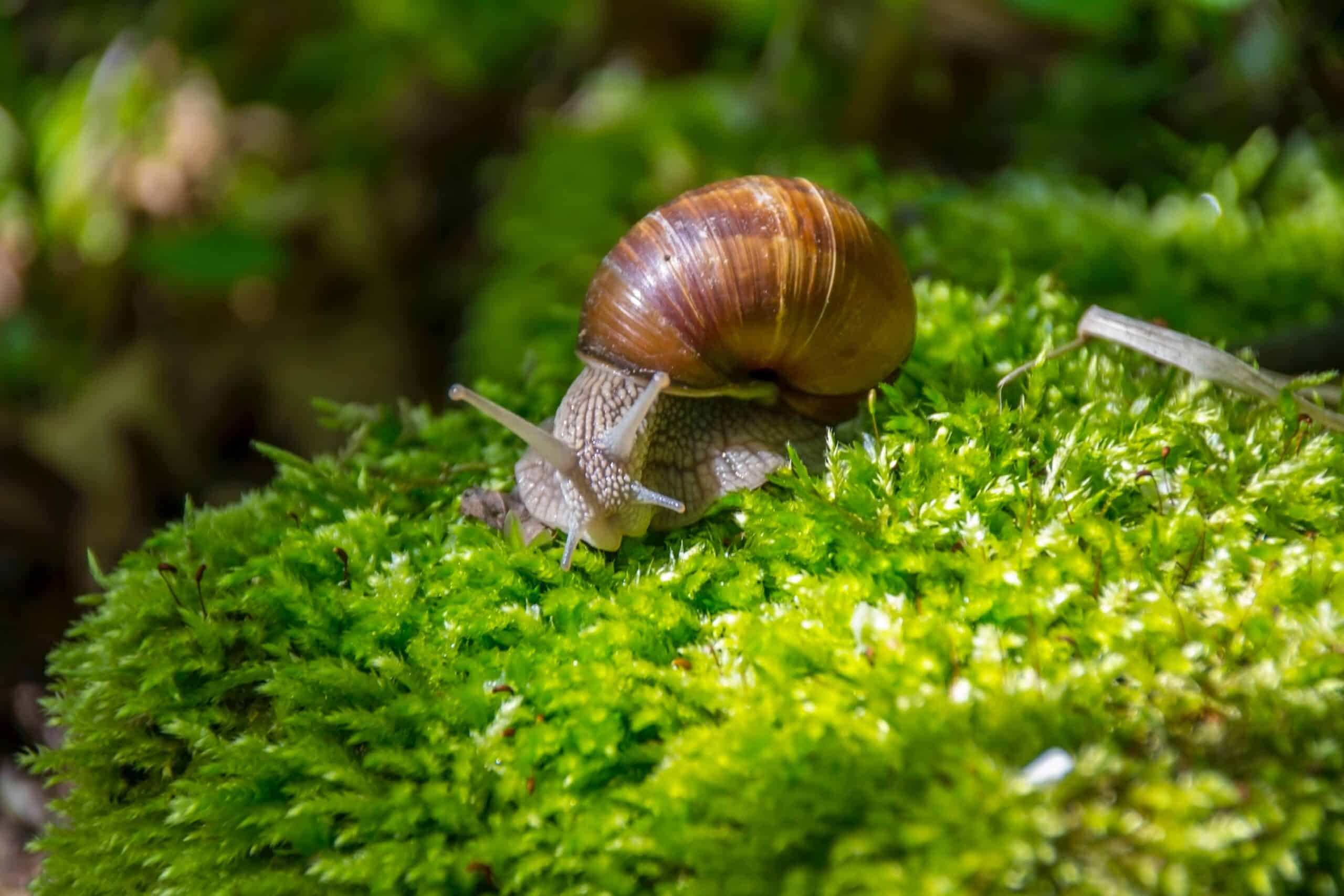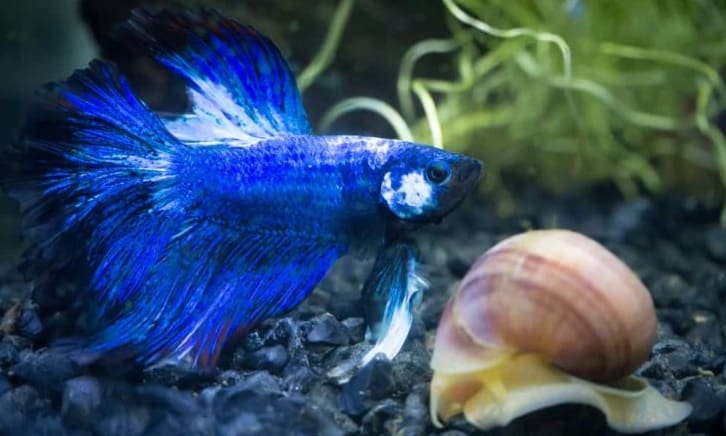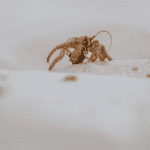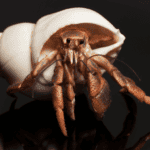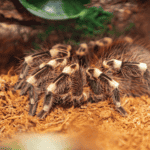Pet snails are fascinating creatures that make for a unique and low-maintenance pet. They are slow-moving, gentle, and make for a calming addition to any home. However, taking care of pet snails is not as simple as just feeding them and letting them be. This guide will provide all the information you need to keep your pet snails healthy and happy.
Understanding Your Pet Snail
Before you start caring for your pet snails, it’s important to understand a bit about their biology and behavior. Snails are mollusks that belong to the gastropod family. They are known for their spiral shells that protect their soft bodies. Most pet snails belong to the species Helix aspersa or Helix pomatia, and they can grow up to 4 inches long.
Snails are nocturnal creatures, which means they are most active at night. They are also very social animals, and they enjoy being around other snails. In the wild, they feed on plants, fruits, and other organic matter. In captivity, they can be fed a variety of fruits and vegetables, as well as commercial snail food.
Setting Up Your Pet Snail’s Habitat
A proper habitat is essential for your pet snail’s health and happiness. Here’s what you need to consider when setting up your snail’s home:
- Size: Snails need a spacious and comfortable habitat, but it doesn’t have to be large. A 10-gallon tank is sufficient for a few snails.
- Substrate: A substrate is the material that covers the bottom of your snail’s tank. A mixture of soil and coconut coir is a good option, as it allows your snail to burrow and hide.
- Lighting: Snails do not require bright lights, but they do need a source of light for heat. A low-wattage bulb will suffice.
- Humidity: Snails need a humid environment, so make sure to mist the substrate regularly. You can also provide a shallow dish of water for your snail to soak in.
- Decor: Snails like to hide, so make sure to provide hiding places such as rocks, plants, and pieces of wood.
Feeding Your Pet Snail
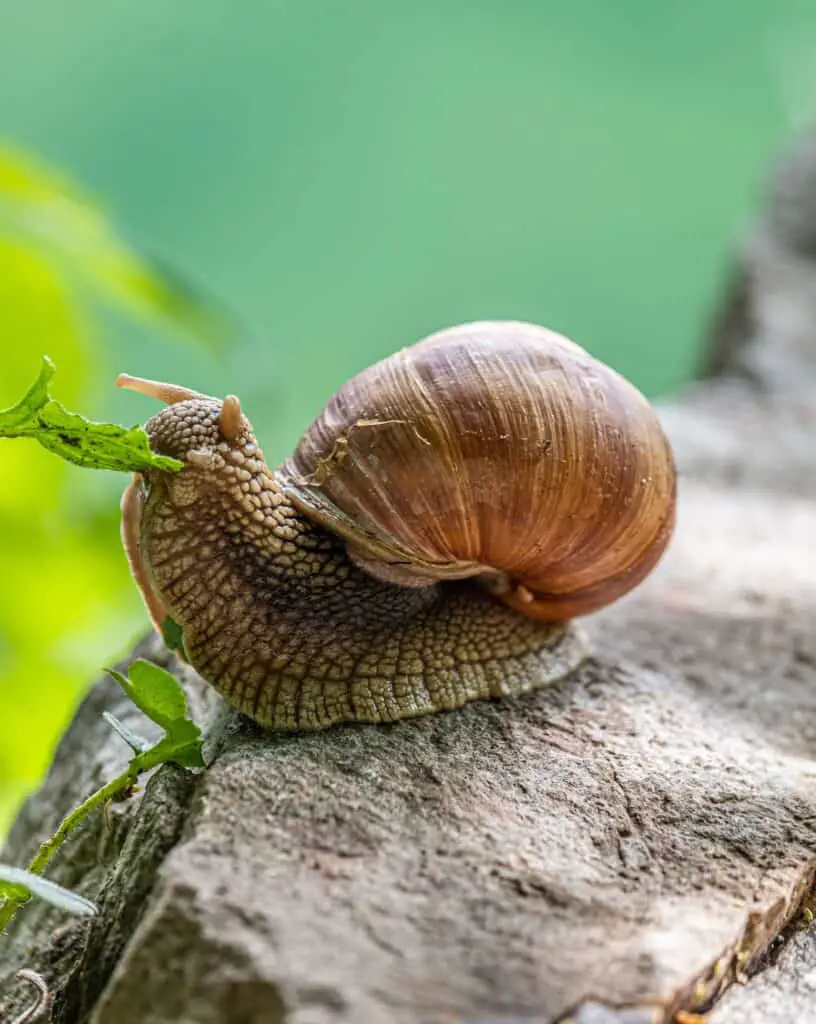
Snails are herbivores, which means they feed on plants. Here’s what you need to know about feeding your pet snail:
- Variety: Offer your snail a variety of fruits and vegetables, such as lettuce, cucumber, and melon. You can also provide commercial snail food.
- Freshness: Make sure to replace your snail’s food daily, as they do not have a good sense of smell and may not eat spoiled food.
- Water: Snails need a source of water, either from soaking or from drinking. Make sure to provide a shallow dish of water for your snail to soak in.
Maintaining Your Pet Snail’s Health
Taking care of your pet snail’s health is crucial to their well-being. Here are a few things to keep in mind:
- Cleanliness: Keep your snail’s habitat clean and free of mold, as mold can cause respiratory problems for your snail.
- Parasites: Snails can be prone to parasites, so make sure to keep an eye out for any signs of infection, such as a lack of appetite, sluggishness, and white spots on their shell.
- Shell care: Snails need to maintain a healthy shell, so make sure to provide a source of calcium, such as crushed eggshells or cuttlebone.
Related: Pet Octopus Care Guide: How to Keep Your Octopus Happy and Healthy
Handling Your Pet Snail
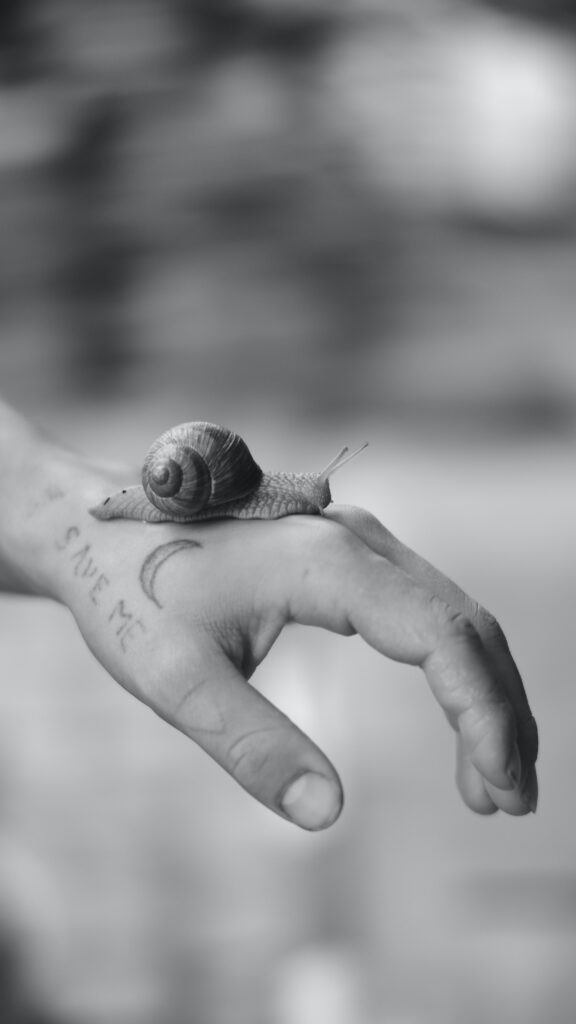
Snails are gentle creatures, but they can still be delicate. Here’s how to handle your pet snail properly:
- Gently: When handling your snail, make sure to support their entire body, and not just their shell. Their shells are delicate, and they can be damaged if not handled carefully.
- Cleanliness: Wash your hands before handling your snail, as they are sensitive to changes in their environment.
- Temperature: Snails are sensitive to temperature changes, so make sure to handle them in a warm and stable environment.
Types of Pet Snails
Pet snails can be divided into two main categories: aquatic snails and terrestrial snails.
Aquatic snails, as their name suggests, live in water. They belong to the families of Prosobranchia and Opisthobranchia. Examples of aquatic snails include the apple snail (Pomacea canaliculata), the ramshorn snail (Planorbidae), and the pond snail (Lymnaea stagnalis). These snails are often kept in aquariums and are used to help maintain the health of the tank by consuming algae and other debris.
Terrestrial snails, on the other hand, are land-dwelling snails. They belong to the family of Stylommatophora and include species such as the brown garden snail (Helix aspersa), the Roman snail (Helix pomatia), and the giant African land snail (Achatina achatina). These snails are often kept as pets and are popular for their unique appearance and ease of care.
In summary, aquatic snails live in water and belong to the families of Prosobranchia and Opisthobranchia, while terrestrial snails are land-dwelling snails and belong to the family of Stylommatophora.
Where to Buy Pet Snails
Pet snails are readily available for purchase from a variety of sources, including:
- Pet stores: Pet stores that specialize in exotic pets often carry pet snails. You can purchase individual snails or a group of snails, depending on the store’s availability.
- Online retailers: Online retailers that specialize in exotic pets, such as Live Aquaria or That Fish Place, often carry pet snails. You can purchase individual snails or a group of snails and have them shipped to your door.
- Breeders: Some breeders specialize in pet snails and may have a variety of species available. You can search for breeders in your area through online forums or through pet-specific websites.
- Local classifieds: Local classifieds, such as Craigslist or Facebook Marketplace, may have listings for pet snails for sale. This is a good option if you are looking for a specific species or if you want to purchase snails from a local breeder.
How Much Do Pet Snails Cost?
The cost of pet snails varies depending on the species and the location. On average, pet snails can cost anywhere from $2 to $20 or more. Here’s a breakdown of the estimated cost by species:
- Brown garden snail (Helix aspersa): $2 to $5 each
- Roman snail (Helix pomatia): $10 to $20 each
- Giant African land snail (Achatina achatina): $20 to $50 each
- Apple snail (Pomacea canaliculata): $5 to $10 each
- Ramshorn snail (Planorbidae): $2 to $5 each
- Pond snail (Lymnaea stagnalis): $2 to $5 each
Keep in mind that these are estimated costs, and the actual cost may vary depending on the location, the retailer, and the availability of the species.
Can Snails Live in Water with Fish?
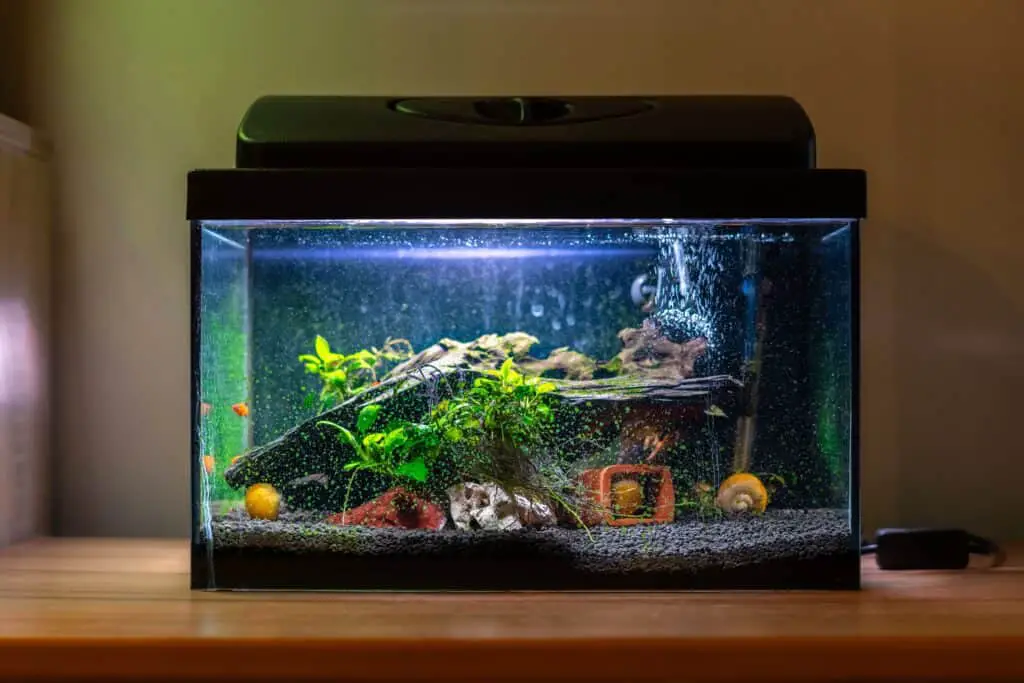
Snails and fish can coexist in the same tank, but there are a few things to keep in mind to ensure the safety and well-being of both species.
- Compatibility: Some fish, such as puffers and loaches, are known to be snail predators and will attack and eat snails. Make sure to research the species of fish you plan to keep in the tank to ensure they are compatible with snails.
- Water parameters: Snails and fish have different requirements for water parameters, such as pH and temperature. Make sure to research the requirements for both species and maintain the water conditions accordingly.
- Space: Snails need a spacious and comfortable habitat, so make sure to provide enough space for both snails and fish to live comfortably.
- Food: Fish and snails have different dietary needs, so make sure to provide a separate feeding area for each species to avoid competition for food.
In conclusion, snails and fish can live in the same tank, but it’s important to research the compatibility of the species, maintain the right water parameters, provide enough space, and separate feeding areas.
Do All Pet Snails Live in Water?
No, not all pet snails live in water. Pet snails belong to the gastropod family, which includes land-dwelling snails. They require a moist and humid environment, but they do not live in water. A mixture of soil and coconut coir is a good option for the substrate in their tank, as it provides the right balance of moisture and support for burrowing and hiding. It’s important to provide a shallow dish of water for your snail to soak in and to mist the substrate regularly to maintain the right level of humidity. Snails also need to drink water, so make sure to provide a source of clean and fresh water at all times.
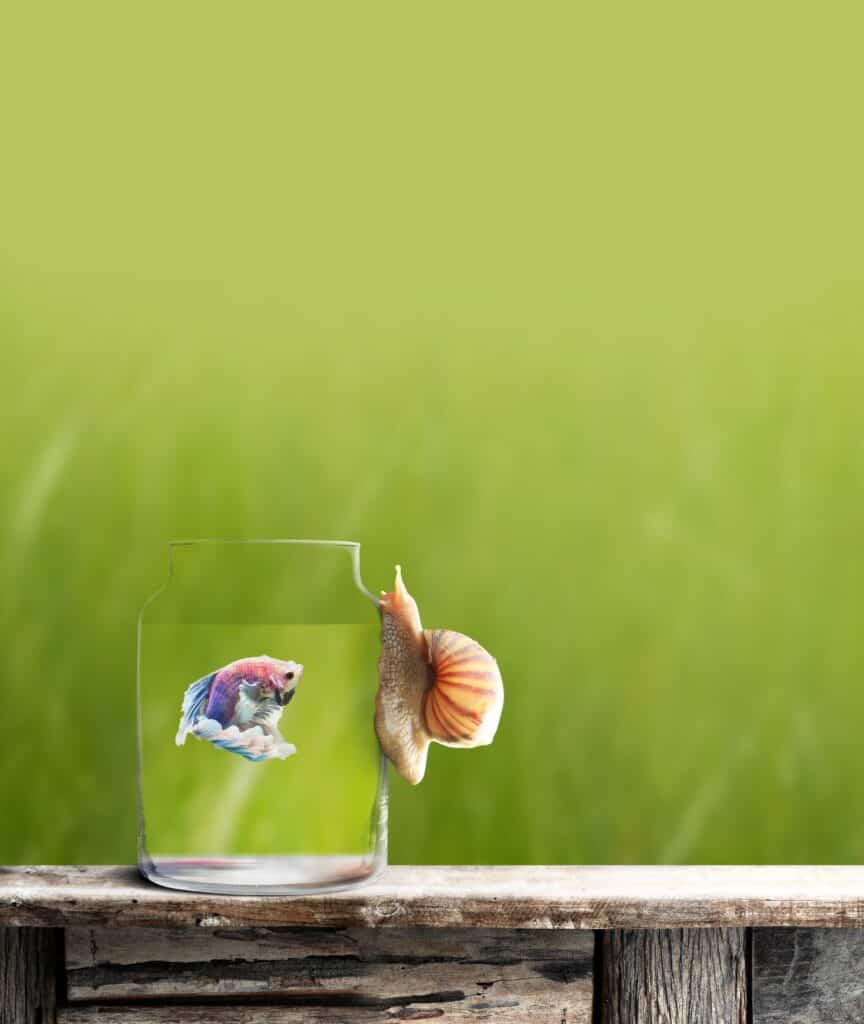
Can Pet Snails Live with Hermit Crabs?
Pet snails and hermit crabs can coexist in the same tank, but there are a few things to keep in mind to ensure the safety and well-being of both species.
- Compatibility: Some species of hermit crabs are known to be snail predators and will attack and eat snails. Make sure to research the species of hermit crab you plan to keep in the tank to ensure they are compatible with snails.
- Space: Both snails and hermit crabs need enough space to live comfortably, so make sure to provide a spacious and comfortable habitat for both species.
- Substrate: Snails need a substrate that is moist but not waterlogged, while hermit crabs need a substrate that is moist but not too damp. Make sure to provide the right substrate for each species.
- Food: Hermit crabs are omnivores and may compete with snails for food, so make sure to provide a separate feeding area for each species to avoid competition.
In conclusion, pet snails and hermit crabs can live in the same tank, but it’s important to research the compatibility of the species, provide enough space, choose the right substrate, and separate feeding areas to ensure the safety and well-being of both species.
Why choose a Snail as a Pet?
There are several reasons why someone might choose a snail as a pet:
- Low maintenance: Snails are low-maintenance pets that do not require a lot of time, effort, or attention. They are ideal for people with busy lifestyles or those who are looking for a calming presence in their home.
- Unique appearance: Snails have a unique and fascinating appearance, with their spiral shells and soft bodies. They are a conversation starter and make for an interesting addition to any home.
- Calm demeanor: Snails are slow-moving and gentle creatures, and their calming presence can be soothing and relaxing.
- Easy to care for: Snails are easy to care for, with simple dietary and environmental needs. They are also hardy creatures that are able to adapt to a variety of conditions.
- Educational: Keeping snails as pets can be a fun and educational experience, as they provide an opportunity to learn about their biology, behavior, and care.
In conclusion, snails make for a unique and low-maintenance pet that are easy to care for and have a calming presence. They are an ideal choice for those looking for a unique and educational pet-keeping experience.
What are the benefits of adding aquatic snails to a fish tank?
- Algae control: Aquatic snails are excellent at consuming algae and other debris in the tank, which helps to maintain a clean and healthy environment for your fish.
- Nutrient cycling: Aquatic snails play an important role in the nitrogen cycle, which helps to maintain a stable environment in the tank.
- Aesthetics: Aquatic snails add an interesting and unique element to your tank, and their movement and behavior can be fascinating to watch.
- Tank maintenance: By consuming algae and other debris, aquatic snails help to reduce the amount of manual maintenance required to keep the tank clean.
- Diversity: Adding aquatic snails to your tank adds diversity to the ecosystem, which can help to create a more balanced and healthy environment for your fish.
What are some Good Names for a Pet Snail?
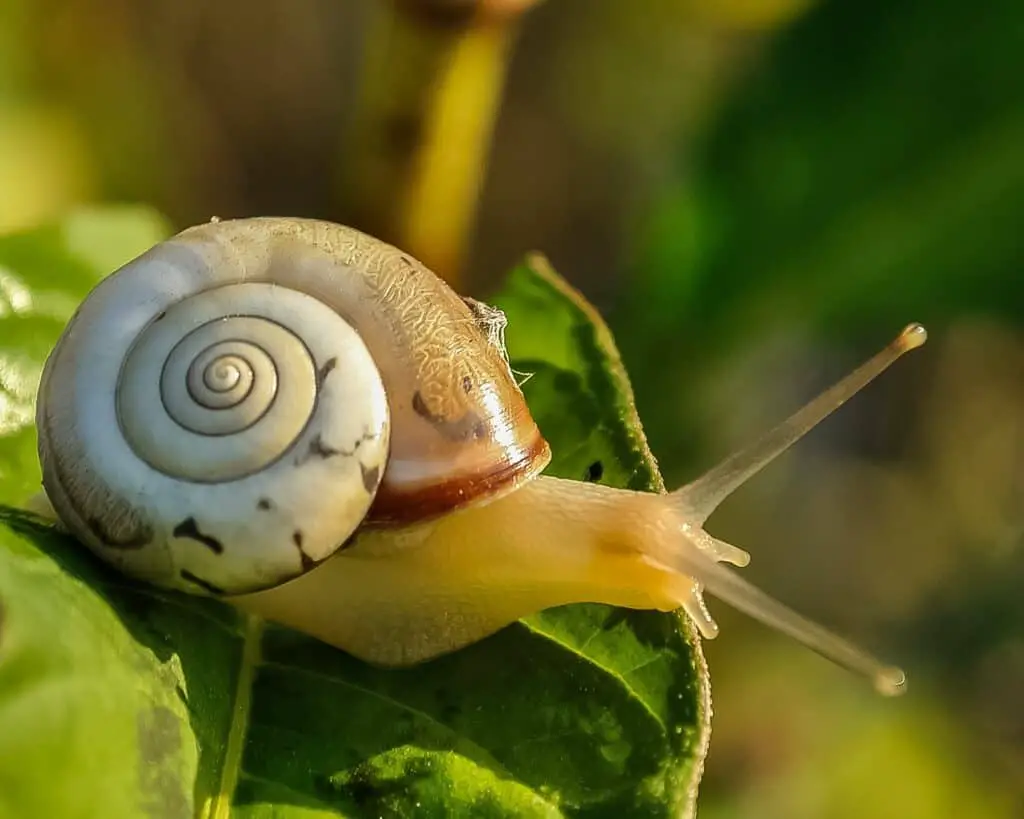
Naming your pet snail can be a fun and creative process. Here are some ideas to get you started:
- Nature-inspired names: Snails are often found in nature, so why not give them a nature-inspired name? Some options include Leaf, Moss, Fern, and Stream.
- Slow and steady names: Snails are known for their slow and steady pace, so why not embrace this trait in their name? Some options include Slo-Mo, Glide, and Saunter.
- Spiral-themed names: Snails are known for their spiral shells, so why not give them a spiral-themed name? Some options include Swirl, Twirl, and Helix.
- Playful names: Snails can be playful creatures, so why not give them a playful name? Some options include Bounce, Jingle, and Tinkle.
- Personal names: Finally, you can always give your snail a personal name that has special meaning to you. Some options include your favorite book or movie characters, family names, or even your own name.
In conclusion, naming your pet snail can be a fun and creative process, and there are many options to choose from, including nature-inspired names, slow and steady names, spiral-themed names, playful names, and personal names. The most important thing is to choose a name that you love and that represents your pet snail’s unique personality.
How to Tell If Your Pet Snail is Dead
Determining if a snail is dead can be a bit tricky, as they can appear lifeless for extended periods of time. Here are a few ways to determine if your pet snail is dead:
- Shell appearance: If the shell of your snail is cracked or damaged, it’s a sign that the snail may be dead.
- Lack of movement: If your snail is not moving, it may be dead. However, keep in mind that snails are naturally slow-moving and can appear lifeless for extended periods of time.
- Smell: If your snail is dead, it may begin to emit a foul odor.
- Soft body: If the body of your snail is soft and mushy, it’s a sign that the snail is dead.
- Lack of response: If your snail does not respond to touch or stimuli, it’s a sign that the snail may be dead.
It’s important to keep in mind that snails are naturally slow-moving and can appear lifeless for extended periods of time. If you’re not sure if your snail is dead, it’s best to err on the side of caution and assume that it is alive.
Can You Keep a Garden Snail as a Pet?
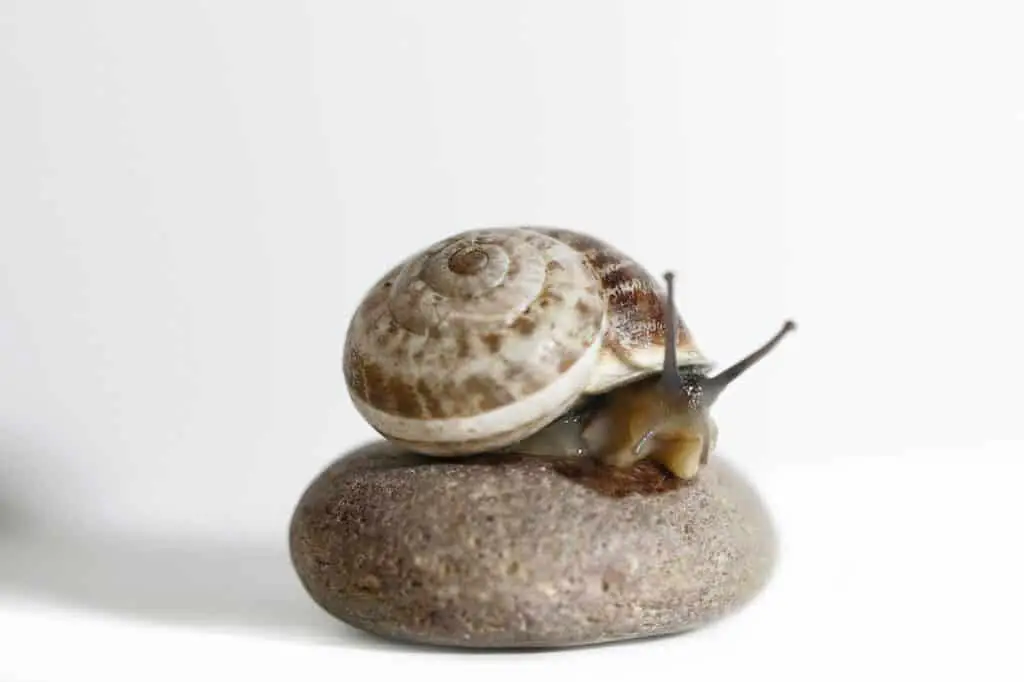
Yes, you can keep a garden snail as a pet. Garden snails, also known as brown garden snails (Helix aspersa), are a popular choice for pet owners due to their unique appearance and ease of care. They are hardy creatures that are able to adapt to a variety of conditions and are easy to care for with simple dietary and environmental needs.
It’s important to note that not all species of garden snails are suitable for keeping as pets. Some species of garden snails are considered pests and are illegal to keep as pets in some areas. It’s important to research the laws and regulations in your area before keeping a garden snail as a pet.
What Do Freshwater Pet Snail Eggs Look Like?
Freshwater pet snail eggs vary in appearance depending on the species of snail. In general, snail eggs are small, round, and translucent, and they are usually deposited in clusters.
Aquatic snail eggs are usually found attached to surfaces in the tank, such as rocks, plants, or decorations. The eggs are usually a pale yellow or white color and are surrounded by a jelly-like substance that protects them.
It’s important to note that not all species of freshwater pet snails lay eggs, and those that do may not lay eggs frequently. Some species of freshwater pet snails are hermaphroditic and are able to reproduce without the need for a mate.
In conclusion, freshwater pet snail eggs vary in appearance depending on the species, but they are usually small, round, translucent, and deposited in clusters. It’s important to research the specific needs and behaviors of the species of snail you are keeping to understand their reproductive habits.
Breeding Habits of Pet Snails
The breeding habits of pet snails vary depending on the species, but here are some general tips for breeding pet snails:
- Provide the right environment: Pet snails need a suitable environment for breeding, with the right temperature, humidity, and substrate.
- Ensure compatibility: Some species of snails are hermaphroditic and can breed without a mate, while others require a mate. It’s important to research the specific needs of the species you are keeping to understand their breeding habits.
- Provide a suitable diet: A balanced and nutritious diet is important for the health and well-being of breeding snails.
- Observe the snails: Observe your snails to determine when they are breeding. Some species of snails may lay eggs frequently, while others may lay eggs only once or twice a year.
In conclusion, the breeding habits of pet snails vary depending on the species, but providing the right environment, ensuring compatibility, providing a suitable diet, and observing the snails are all important steps in the breeding process. It’s important to research the specific needs of the species you are keeping to understand their breeding habits and to provide the right care for your pet snails.
How Big Do Giant Pet Snails Get?
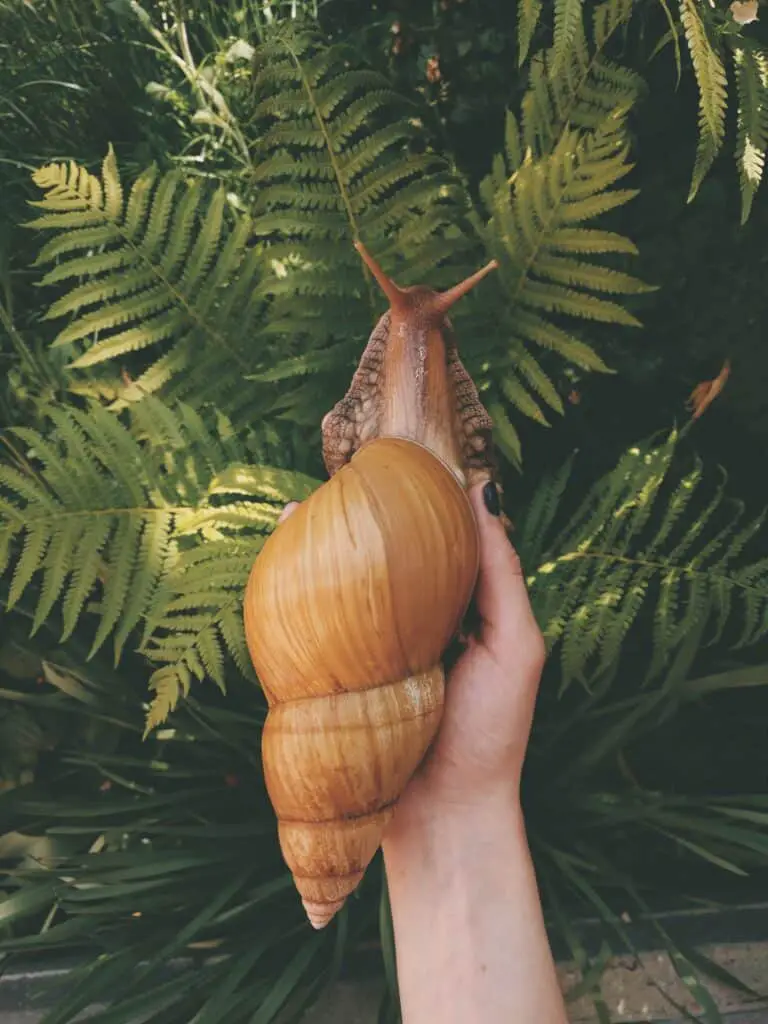
Giant pet snails are known for their large size and can grow to be quite large, depending on the species. One of the most popular species of giant pet snails is the giant African land snail (Achatina achatina), which can grow up to 8 to 10 inches in length and 4 to 6 inches in diameter.
Other species of giant pet snails, such as the giant tiger snail (Plectopylis sp.), can grow up to 5 inches in length.
It’s important to note that the size of giant pet snails can vary depending on several factors, including their age, diet, and environment. Providing a suitable environment and diet is essential for the health and well-being of giant pet snails and for promoting healthy growth.
In conclusion, giant pet snails, such as the giant African land snail (Achatina achatina), can grow up to 8 to 10 inches in length and 4 to 6 inches in diameter, while other species of giant pet snails, such as the giant tiger snail (Plectopylis sp.), can grow up to 5 inches in length. The size of giant pet snails can vary depending on several factors, including their age, diet, and environment.
Conclusion
Pet snails make for fascinating and low-maintenance pets. They are gentle creatures that are easy to care for with the right setup and attention. From understanding their biology to setting up their habitat, feeding, and maintaining their health, this guide provides all the information you need to keep your pet snails healthy and happy. With proper care, your pet snails will be a calming addition to your home for years to come.
